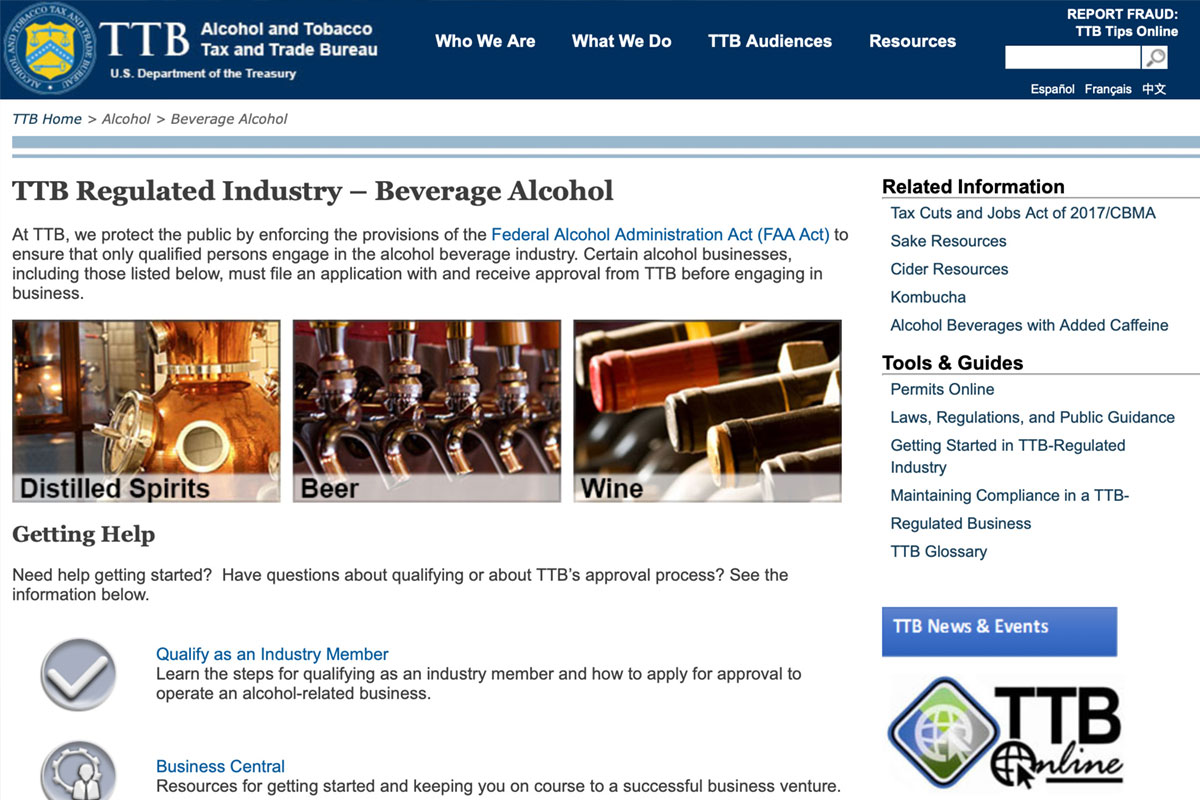GUIDES: Regulations and Compliance
Regulations & Compliance

Once the plans for your distillery are done, it’s time to start thinking about the hardest part of this industry: the regulations. First off, your distillery will be regulated by the Alcohol, Tobacco, Tax and Trade Bureau (TTB) on the federal level. Then, every state has an agency that regulates the manufacturing and sale of alcohol. Their names and scope vary enough that it’s useless to list here. Instead, a simple Google search will help you find the website for your state’s governing agency. Furthermore, you will be regulated by your fire marshal (remember meeting them earlier?) to ensure that your facility is safe. And there will be at least two or more groups that will license your business and ensure you are getting taxed appropriately and, if necessary, collecting sales tax accordingly.

Federal Regulations and the TTB
The TTB wants to know what you will be doing at your facility. More specifically, they’ll want to know about the vessels you will be using to hold your spirits, where they will be located, and where your bonded area is. Even if you will be small enough to not need a bond (we highly recommend you get one anyhow), there will still be an area designated as your bonded area. There’s a very specific reason we haven’t discussed permit applications until now, as we begin to dig into federal regulations. During the MEP and Architecture design phase, tanks and walls will still be moving around. Once they are done, you should be confident that this will be the final layout for your distillery. As you begin to fill out your permit application, you need to understand that you are certifying that this is how your distillery will exist once it’s built. However, there is some grey area in whether that refers to when you sign the application or when the permit is approved. As of now, the TTB has not performed any inspections on distilleries prior to permit approval to see if they match their permit, so most craft distilleries operate under the assumption that their distillery must match their application upon approval. To be safe, you’ll need to check the approval times on the TTB website and align your submittal so that you can fire up your distillery the day you get your permit approved. Filling out the TTB permit isn’t overly onerous if you’ve gone through the planning process outlined above. And, as long as you’ve read CFR 27, you should know the answers to all of the questions between the two.
State Regulations
State permitting varies too much to cover in any kind of depth, but most states have a similar website to that of the TTB that will tell you how long their permitting process takes. Despite the variations from state to state, you can expect to use a similar process to your TTB permit. Unfortunately, most states have not staffed their distillery regulation departments appropriately to accommodate for the craft boom, so it’s likely that permitting times from your state government will be longer than the TTB, though this wasn’t always the case. Since you should have looked up your state regulations way back when we were deciding on our distillery business model, these questions will likely be easier than familiarizing yourself with CFR 27.
